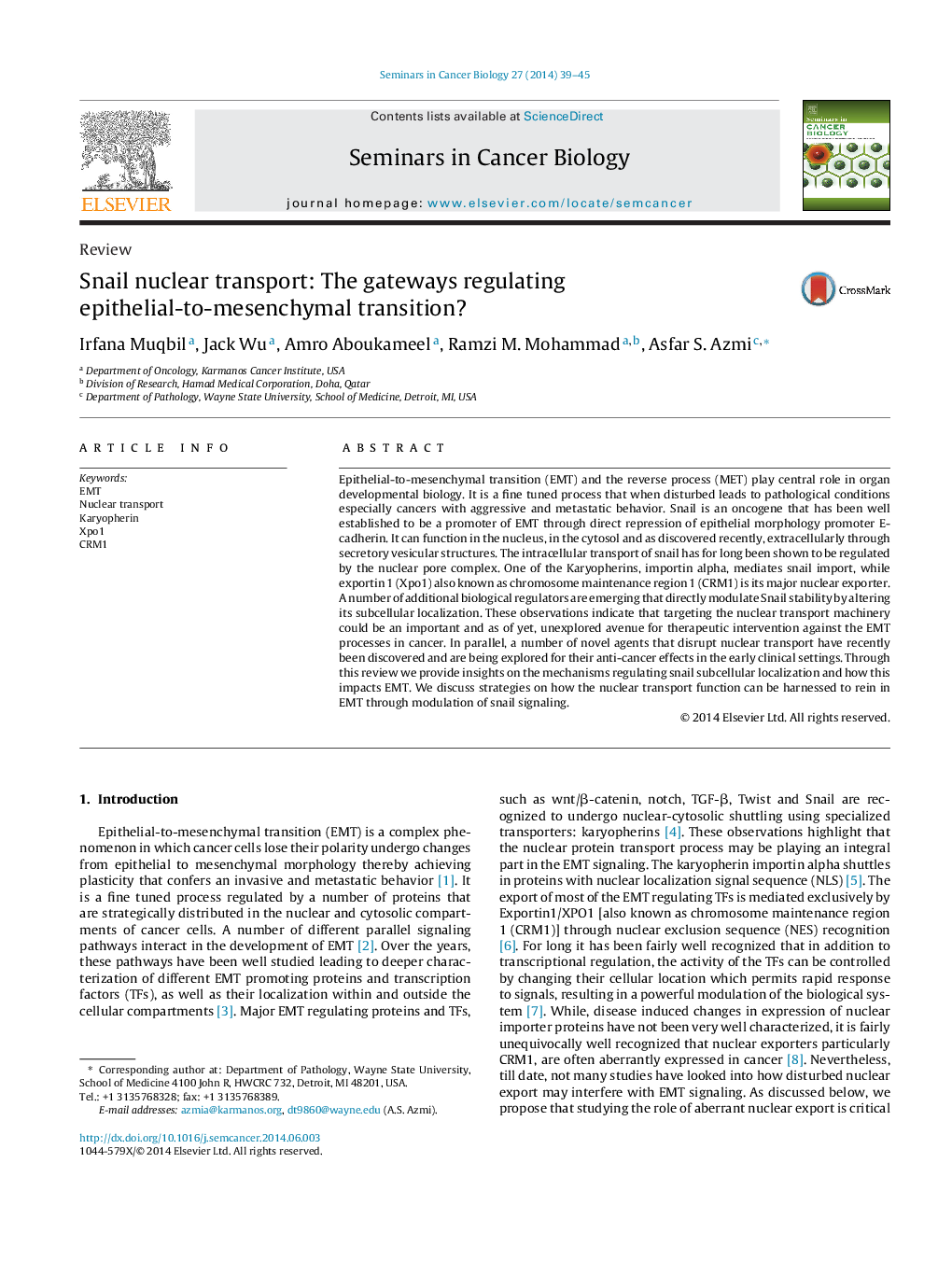| کد مقاله | کد نشریه | سال انتشار | مقاله انگلیسی | نسخه تمام متن |
|---|---|---|---|---|
| 2023691 | 1542540 | 2014 | 7 صفحه PDF | دانلود رایگان |
عنوان انگلیسی مقاله ISI
Snail nuclear transport: The gateways regulating epithelial-to-mesenchymal transition?
ترجمه فارسی عنوان
حمل و نقل اتمی حلزون: دروازه های تنظیم انتقال پروتئین به مزانشیمی؟
دانلود مقاله + سفارش ترجمه
دانلود مقاله ISI انگلیسی
رایگان برای ایرانیان
کلمات کلیدی
موضوعات مرتبط
علوم زیستی و بیوفناوری
بیوشیمی، ژنتیک و زیست شناسی مولکولی
زیست شیمی
چکیده انگلیسی
Epithelial-to-mesenchymal transition (EMT) and the reverse process (MET) play central role in organ developmental biology. It is a fine tuned process that when disturbed leads to pathological conditions especially cancers with aggressive and metastatic behavior. Snail is an oncogene that has been well established to be a promoter of EMT through direct repression of epithelial morphology promoter E-cadherin. It can function in the nucleus, in the cytosol and as discovered recently, extracellularly through secretory vesicular structures. The intracellular transport of snail has for long been shown to be regulated by the nuclear pore complex. One of the Karyopherins, importin alpha, mediates snail import, while exportin 1 (Xpo1) also known as chromosome maintenance region 1 (CRM1) is its major nuclear exporter. A number of additional biological regulators are emerging that directly modulate Snail stability by altering its subcellular localization. These observations indicate that targeting the nuclear transport machinery could be an important and as of yet, unexplored avenue for therapeutic intervention against the EMT processes in cancer. In parallel, a number of novel agents that disrupt nuclear transport have recently been discovered and are being explored for their anti-cancer effects in the early clinical settings. Through this review we provide insights on the mechanisms regulating snail subcellular localization and how this impacts EMT. We discuss strategies on how the nuclear transport function can be harnessed to rein in EMT through modulation of snail signaling.
ناشر
Database: Elsevier - ScienceDirect (ساینس دایرکت)
Journal: Seminars in Cancer Biology - Volume 27, August 2014, Pages 39-45
Journal: Seminars in Cancer Biology - Volume 27, August 2014, Pages 39-45
نویسندگان
Irfana Muqbil, Jack Wu, Amro Aboukameel, Ramzi M. Mohammad, Asfar S. Azmi,
